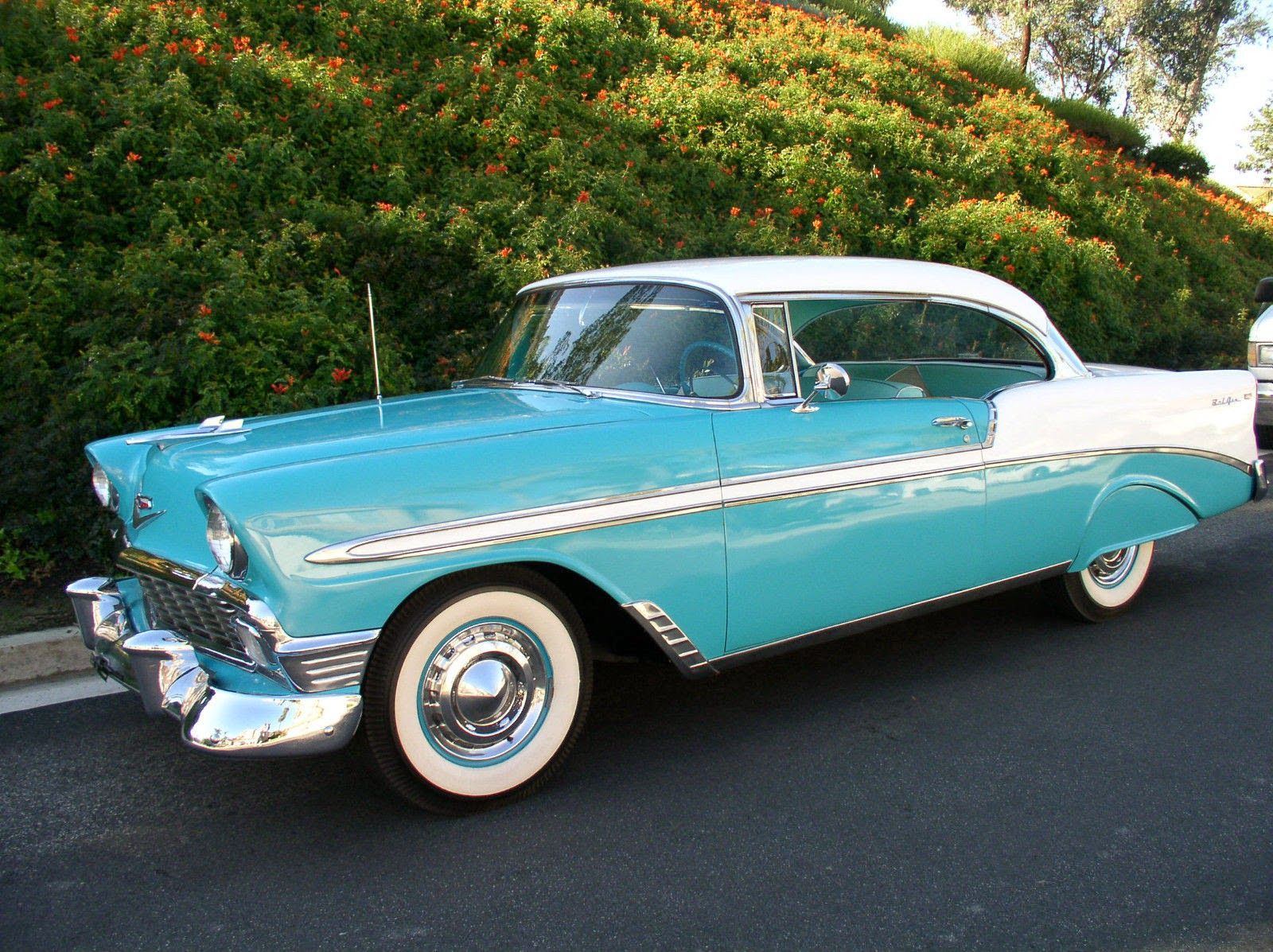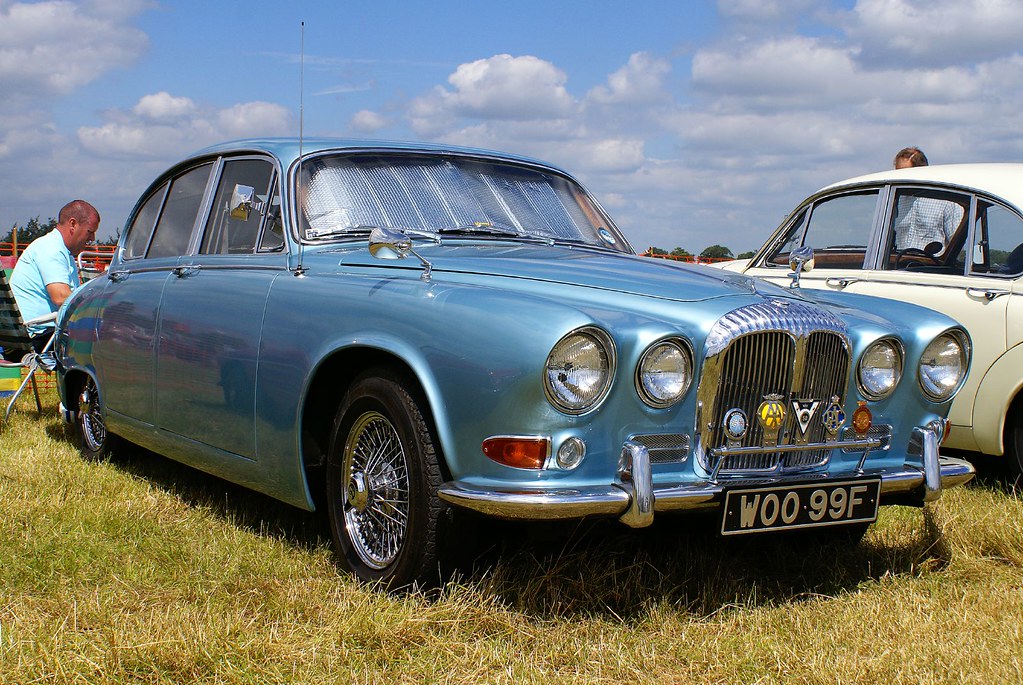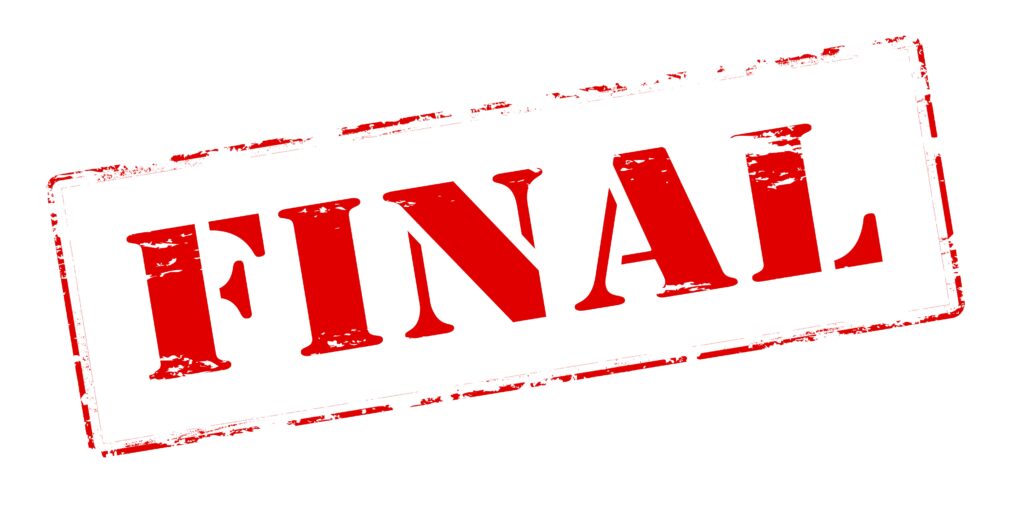
For the automotive enthusiast, the allure of classic American cars is undeniable. These rolling sculptures of steel, chrome, and horsepower represent a bygone era of engineering and design, evoking nostalgia and pride. Yet, as these timeless machines continue to captivate collectors and drivers, they increasingly face a complex and often contradictory landscape of modern environmental regulations, particularly regarding emissions.
The days of unrestrained automotive power, where engine performance overshadowed environmental impact, were dramatically curtailed by landmark legislation like the Clean Air Act of 1970. This pivotal federal law, alongside pioneering state initiatives, began a national effort to curb vehicle pollutants. However, for a vehicle crafted decades before such standards, navigating today’s emissions rules presents a unique set of challenges and exemptions, creating a fascinating dichotomy between preservation and compliance.
This in-depth exploration will dissect the intricate web of emissions regulations that impact classic cars across the United States. We’ll delve into how these vehicles are defined, the varying state-specific requirements, and the crucial ‘loopholes’ that allow many cherished classics to remain on the road, offering essential insights for every owner and admirer of America’s automotive heritage.

1. **The Foundational Shift: The Clean Air Act of 1970 and Emissions Control**Before the Clean Air Act of 1970, the automotive landscape was largely unburdened by federal emissions regulations. It was a time when horsepower ruled, and the environmental impact of tailpipe emissions was an emerging concern. However, this act established a critical federal law, mandating automakers to produce vehicles that generated fewer emissions, fundamentally altering vehicle design and manufacturing practices across the nation.
Even before this federal mandate, California had already taken a proactive stance, enacting the first standards for tailpipe emissions in 1966. This early move by the Golden State underscored a growing awareness of air quality issues. The primary goal of these new regulations was clear: to limit the amount of pollutants such as carbon monoxide, hydrocarbons, nitrogen oxides, and sulfur dioxide, thereby protecting both the environment and public health from harmful smog.
This legislative shift marked the definitive end of what many enthusiasts refer to as the “era of big horsepower,” as emissions control gear and engine detuning became necessary. While the Clean Air Act has undergone amendments over the years, granting the Environmental Protection Agency (EPA) broader authority, it remains a cornerstone of legislation for reducing air pollution. Its legacy continues to shape the automotive industry and the regulations classic cars contend with today.

2. **Defining “Classic”: Age, Registration, and State-Specific Classifications**The classification of a vehicle as “classic” is far from universal, varying significantly depending on the state, country, or even the specific organization. Generally, a car is typically considered classic when it reaches 25 years or older. This age threshold is often the first step in determining whether a vehicle qualifies for special treatment under emissions regulations, distinguishing it from newer, more stringently regulated models.
However, this seemingly straightforward age criterion quickly becomes complex due to state-specific interpretations. For instance, in Arkansas, a vehicle must be at least 45 years old to be considered for the “Antique Motor Vehicle tag,” a definition that was updated in 2019 from the previous 25-year mark. In contrast, Texas allows vehicles 25 years or older to qualify for antique registration and plates, which come with specific exemptions.
Many states offer special classic car license plates or registration categories, such as “historic,” “antique,” or “parade vehicles.” These designations often come with associated benefits, primarily an exemption from emissions testing. However, such classifications can also impose restrictions on a vehicle’s usage, as seen in Ohio, where historical vehicles may not be operated for general transportation, typically being limited to specific events like club gatherings or car shows.
Organizations like the Classic Car Club of America (CCCA) provide their own definitions, often focusing on “fine” or “distinctive” automobiles produced within specific historical windows, like between 1915 and 1948. Similarly, the Vintage Car Club of Canada (VCCC) recognizes vehicles 25 years and older as classics. These diverse definitions underscore the fragmented nature of classic car classification, highlighting the need for owners to meticulously research local and state-specific criteria.

3. **Federal vs. State Authority: A Patchwork of Regulations Across the US**When it comes to automotive emissions, the United States operates under a dual regulatory system, with the Environmental Protection Agency (EPA) setting federal standards while individual states retain the power to implement stricter regulations. This layered approach creates a complex and often contradictory patchwork of rules across the nation, making compliance a geographical challenge for classic car owners.
Crucially, the Clean Air Act grants states a choice: they can either adhere to the EPA’s federal regulations or adopt California’s notoriously stringent standards. This choice has significant implications, with 17 other states opting to follow California’s lead. Consequently, what is considered compliant in one state might be entirely insufficient in another, necessitating a deep understanding of local laws.
Even within states, regulations can vary. While over 21 states may not require emissions testing statewide, specific counties within those states often do. A prime example is Wisconsin, where mandatory testing is required in Kenosha, Milwaukee, Ozaukee, Racine, Sheboygan, Washington, and Waukesha counties, despite the state having 72 counties in total. This localized enforcement means that an owner living just outside a regulated county could have vastly different requirements than a neighbor a few miles away.
This intricate web underscores the paramount importance of thorough research for anyone investing in or owning a classic car. Owners must diligently investigate the laws and regulations in the specific city, county, and state where their vehicle will be kept. Emissions laws, restrictions, or rules can differ significantly, and staying informed is the only way to ensure compliance and avoid potential penalties.

4. **General Exemptions: The “Loophole” for Classic, Historic, and Antique Vehicles**Despite the tightening grip of modern emissions regulations, a significant ‘loophole’ exists for many classic car enthusiasts: specific exemptions for classic, historic, antique, or parade vehicles. In many jurisdictions, these special classifications mean that such vehicles are not required to undergo the same rigorous emissions tests as their contemporary counterparts, offering a degree of relief to owners dedicated to preserving automotive history.
This exemption often stems from the understanding that classic cars, by their very nature, contribute minimally to overall air pollution. Their numbers on the road are relatively low, and they are typically not used as daily drivers. Instead, they are cherished possessions, often brought out for special occasions, shows, or parades. This limited usage, coupled with the meticulous maintenance practices of many enthusiasts, means their environmental impact is generally considered negligible.
Specific examples of these exemptions abound across the country. In Texas, for instance, vehicles with antique registration and plates, or those simply 25 years old or older, are explicitly exempt from annual emissions inspections. Similarly, California, despite its reputation for strict environmental standards, provides an exemption for internal combustion engine (ICE) cars built on or before 1975, meaning these older vehicles do not need to pass a smog check.
Further reinforcing these general exemptions, states like Utah exempt vehicles manufactured in 1967 or earlier. Nevada offers another nuanced example, where vehicles registered with classic vehicle, classic rod, or old-timer license plates that are driven 2,500 miles or less per year are exempt from emissions testing. These various provisions highlight a broader recognition among lawmakers of the unique status of classic cars and the importance of allowing enthusiasts to maintain and enjoy them without prohibitive regulatory burdens.

5. **Navigating Strict Standards: The California Exception and Its Reach**California stands as an undisputed leader in environmental regulation, often setting standards that are not only ahead of federal requirements but also significantly stricter than those of the Environmental Protection Agency (EPA). For classic car owners, understanding California’s distinct approach to emissions testing is crucial, as its influence extends far beyond its state borders.
The Golden State’s regulations are so stringent that other states are given the option to either adopt the EPA’s rules or California’s, a testament to their comprehensive nature. As a result, 17 other states have chosen to align with California’s emissions standards, effectively expanding its regulatory reach across a substantial portion of the nation. This makes California’s exemptions and requirements a benchmark for many enthusiasts.
Despite its strictness, California does offer notable exemptions for older vehicles. For example, internal combustion engine (ICE) cars built on or before 1975 are explicitly exempt from needing a smog check. This provides a significant reprieve for owners of truly vintage American iron, allowing them to enjoy their vehicles without the burden of modern emissions compliance. Interestingly, gasoline-powered cars less than eight model years old also do not need to pass an emissions test in California.
However, for cars falling outside these specific exemptions, California’s smog check requirements are among the most rigorous. This dichotomy underscores the state’s balanced, albeit strict, approach: acknowledging the historical significance of truly old vehicles while maintaining a firm grip on newer models and those that do not meet the age criteria. Owners of classic cars in California, or in states that follow its lead, must remain exceptionally vigilant regarding their vehicle’s model year and classification to ensure compliance.

6. **Varying State-Specific Requirements: A Closer Look at Diverse Approaches**The landscape of emissions testing for classic cars across the United States is a testament to legislative diversity, with requirements fluctuating wildly from state to state. While some jurisdictions have entirely phased out their testing programs, others enforce mandatory inspections, creating a complex tapestry that requires careful navigation from every classic car owner. This variability makes a universal understanding challenging, highlighting the need for localized knowledge.
Consider Connecticut, a state that presents a unique scenario. It requires biennial emissions testing for a range of vehicles, including those that are 25 years old or older. This stands in contrast to the general trend of exempting classic vehicles based on age alone, demonstrating how some states interpret the need for environmental oversight even for older models. Similarly, Oregon mandates biennial emissions testing for vehicles from 1975 onwards in the Portland metro area, and for vehicles 20 years or newer in the Medford metro area, with specific exemptions for heavy diesels, motorcycles, and electric vehicles.
Conversely, other states offer more generous exemptions. New Hampshire, for example, only requires emissions inspections for model year 1996 and newer vehicles that are less than 20 years old, implicitly exempting anything older. North Carolina demands annual inspections until a vehicle reaches 30 years old, after which testing is no longer required. Pennsylvania and Rhode Island also provide explicit exemptions for antique vehicles, classics, and street rods, recognizing their special status within their annual or biennial inspection programs.
This intricate mosaic of regulations extends to states like Texas, where only cars less than 25 years old are subject to emissions inspections, and vehicles with antique plates are exempt from the annual safety inspection. These examples underscore that the definition of a classic car, along with the associated emissions regulations, varies significantly across different regions. It is imperative for classic car owners to research and understand the precise laws and requirements pertinent to their specific location to ensure their cherished vehicles remain compliant and road-legal.

7. **Importing a Classic Car: Navigating the Global Regulatory Maze**The allure of classic American cars often extends globally, inspiring enthusiasts to import vehicles. This process, however, presents unique regulatory hurdles, particularly regarding the car’s condition and documentation. Before shipping, meticulous inspection is crucial. Many classics hide issues like rust or engine problems. Requesting a full history report, detailed photos/videos, and ideally, commissioning a local mechanic for a pre-purchase check, can prevent significant setbacks.
Beyond inspection, logistics and financial commitments are substantial. Various shipping options exist, each with differing costs and protection levels. Buyers must factor in duties, taxes, and customs fees, which vary by country, vehicle value, and shipping method. Import duty is typically a percentage of the car’s value, while VAT or sales tax may apply. Customs processing for paperwork adds further expense, demanding a comprehensive financial plan before import.
After customs clearance, proper registration in the new home state is essential, requiring specific license plates and titles. State registration requirements differ significantly, so consulting the local DMV is critical. This involves paying relevant fees and taxes, and sometimes, a state inspection is mandatory before road-legality. Securing appropriate classic car insurance is also non-negotiable, safeguarding this valuable investment.
The U.S. “25-year rule” offers a significant advantage for classic car importers. Vehicles over 25 years old can often be legally imported without meeting current Federal Motor Vehicle Safety Standards (FMVSS) or modern emissions standards, classified as ‘classic’ or ‘antique’. This bypasses strict compliance for many foreign-market models. However, import duties may still apply, and specific paperwork, including a bill of sale, ID, DOT Form HS-7, and EPA Form 3520-1, is mandatory. While federally exempt, owners should note original emission levels might restrict entry into some low-emission zones, and fuel conversion remains an option.

8. **The Impact on Restoration Projects: Authenticity vs. Compliance**Classic car restoration is a profound commitment, a labor of love preserving automotive history. Yet, this passion often confronts modern emissions laws, significantly influencing restoration scope, cost, and feasibility. As environmental regulations tighten, restorers face increasing pressure to comply, often at the cost of original design and historical accuracy.
A core challenge lies in the incompatibility of older engine designs with contemporary emissions standards. Many classic engines were conceived when environmental concerns were minimal. Modifying these vehicles to meet current laws often demands extensive alterations to their original powertrain, like installing catalytic converters or electronic fuel injection systems never factory-fitted. Such changes can drastically alter authenticity, potentially diminishing historical accuracy and intrinsic value for purists.
The financial strain of emissions compliance heavily impacts restoration budgets. Necessary upgrades to meet modern standards can substantially inflate project costs, requiring investment in new exhaust systems or modern emissions control gear. This financial burden often deters restorers, especially on tighter budgets, forcing a difficult choice between historical integrity and road-legal status in certain regions.
Further complicating matters is the varied landscape of emissions testing exemptions. While some states offer generous age-based exemptions, others impose stricter requirements, creating a complex, state-by-state patchwork. Understanding these nuanced regulations is paramount; non-compliance can lead to fines, inability to register, or a failed inspection, effectively halting a meticulously planned restoration. The challenge is balancing environmental responsibility with faithful preservation.

9. **Practical Advice for Owners: Ensuring Your Classic Runs Clean and Strong**Owning a classic car is a privilege, demanding responsibility for smooth operation and, where required, emissions compliance. While many classics enjoy exemptions, proactive maintenance benefits all, especially when navigating stricter rule areas. Regular upkeep extends your cherished vehicle’s life and ensures optimal performance, making potential emissions testing less daunting.
To enhance your classic’s chance of passing an emissions test, or simply to ensure cleaner operation, specific maintenance is vital. Regular tune-ups are essential for peak engine efficiency, including checking spark plugs, ignition timing, and fuel-air mixture. Inspecting and considering upgrades for components like the exhaust system, carburetor, and PCV valve is wise, as worn parts contribute significantly to higher emissions. Even minor repairs vastly improve performance and environmental output.
Fuel choice profoundly impacts your classic’s emissions profile. Opting for premium-grade, non-ethanol, or ethanol-free fuel, if appropriate and available, can often reduce harmful emissions and protect older fuel system components. Before any official test, a pre-test checkup with a trusted mechanic is invaluable. Experts can identify and rectify potential issues, fine-tuning your classic to meet required standards effectively.

10. **Handling the Unexpected: What to Do If Your Classic Fails an Emissions Test**Despite meticulous maintenance, a classic car can sometimes unexpectedly fail an emissions test. This can be disheartening, but a failed test isn’t necessarily the end for your beloved vehicle. Several clear, actionable options exist to help owners overcome this hurdle and return their classic to compliant road use.
The most direct action is addressing specific issues highlighted in the test report. Emissions diagnostics pinpoint pollutants exceeding limits, guiding your mechanic to problematic areas. This might involve carburetor adjustments, vacuum leak repairs, oxygen sensor replacement, or exhaust system fixes. Focusing on these precise repairs is critical for bringing the vehicle into compliance.
In some states, classic car owners investing significantly in repairs yet still failing may qualify for a waiver. These waivers are typically granted if repair costs exceed a state-defined threshold, acknowledging unique financial challenges of older vehicles while encouraging good-faith compliance. Keeping detailed repair expense records is essential.
Another crucial step post-failure is re-evaluating potential exemptions. Definitions vary widely by state, county, and model year. Perhaps your vehicle fits a category you hadn’t applied for or were unaware of. Thoroughly reviewing local regulations and seeking advice from classic car clubs or specialized legal counsel can uncover overlooked exemptions, potentially offering a compliance path without further extensive repairs.
11. **The Broader Debate: Preserving Heritage – Arguments for Exemptions**The ongoing debate over classic car emissions testing highlights the tension between modern environmental regulations and preserving automotive history. For many, classics are more than vehicles; they are rolling art, engineering marvels, and symbols of nostalgia and pride. The central question remains: should these timeless machines face the same stringent environmental standards as contemporary cars?
Proponents of exemptions argue persuasively for their minimal environmental footprint. Classic cars contribute negligibly to overall air pollution, representing an extremely small fraction of total vehicles. They are rarely used as daily drivers, meaning their cumulative mileage and emissions are significantly lower than the vast modern fleet, making stringent testing seem disproportionate.
Furthermore, the classic car community is known for meticulous maintenance. Enthusiasts invest considerable resources to keep their prized possessions in pristine mechanical order, often surpassing the upkeep of many standard daily drivers. This diligent care, including careful tuning and appropriate fuels, enables older engines to run remarkably efficiently for their era, potentially resulting in lower emissions than poorly maintained newer models, reinforcing the case for exemption.
Exemption criteria often acknowledge the unique status of classics. Many jurisdictions define them for exemption purposes as 20-25 years old, recognizing their pre-modern emissions design. Regulations may also consider vehicle condition and limited use, requiring proof that the car is primarily for special occasions or shows. Rare or limited-production models might also receive special consideration, prioritizing their preservation over minor emissions concerns.

12. **The Broader Debate: Evolving Standards – Arguments Against Exemptions and Finding Balance**While compelling arguments support classic car emissions exemptions, an equally significant perspective underscores the broader societal need for cleaner air and a healthier environment. Opponents of widespread exemptions argue that effective air quality management requires a comprehensive approach, where every potential pollution source, regardless of age or aesthetic appeal, must be considered. As urban pollution escalates, the call for universal accountability grows, making blanket exemptions a point of contention.
Critics also voice concern that permitting classic cars to operate with minimal or no emissions oversight could inadvertently set a problematic precedent. Such a policy, they contend, might undermine ongoing efforts to improve air quality and combat climate change. In a regulatory landscape striving for continuous environmental improvement, any perceived “loophole” could, even symbolically, weaken the commitment to achieving more ambitious environmental goals across the wider automotive fleet.
This presents a complex dilemma: how to balance celebrating and preserving automotive history, a deeply cultural passion, with ensuring a sustainable environment for future generations. Lawmakers and environmental agencies continually navigate this intricate issue, aiming to craft regulations that acknowledge the unique status of classic vehicles while upholding fundamental environmental responsibilities. It’s a delicate tightrope walk, seeking solutions that satisfy both enthusiasts and ecological demands.
Ultimately, preparing for the future means classic car owners must do more than just routine maintenance. It requires staying continually updated on dynamic state and federal regulations. Active participation in classic car clubs provides a vital platform for advocacy, lobbying for fair, balanced rules. Planning ahead for cross-state travel, by researching specific emissions requirements, also avoids surprises. Through informed, proactive engagement, classic car owners can responsibly ensure their treasured vehicles remain a cherished part of automotive history for generations.
As we’ve journeyed through the intricate world of classic car emissions, it’s clear that owning these magnificent machines is a commitment to both automotive passion and responsible stewardship. Whether navigating importing complexities, painstakingly restoring, or simply ensuring compliance, the enthusiast’s role is evolving. The key to keeping America’s cherished automotive heritage alive and roaring into the future lies in a balanced approach: embracing the spirit of these iconic vehicles while diligently adapting to the evolving environmental tapestry that shapes our roads. With knowledge and dedication, these legends can continue to captivate and inspire, responsibly.




